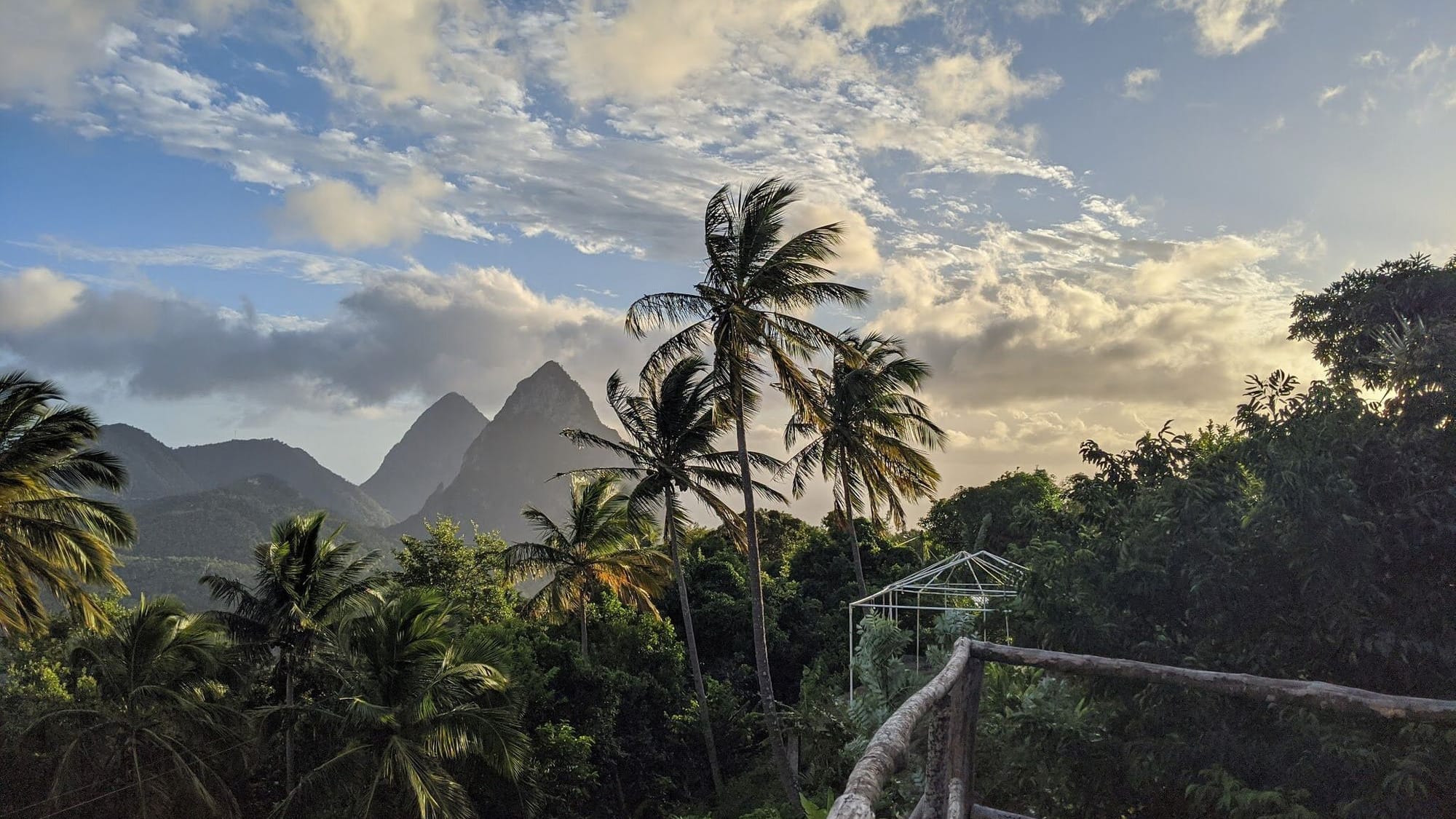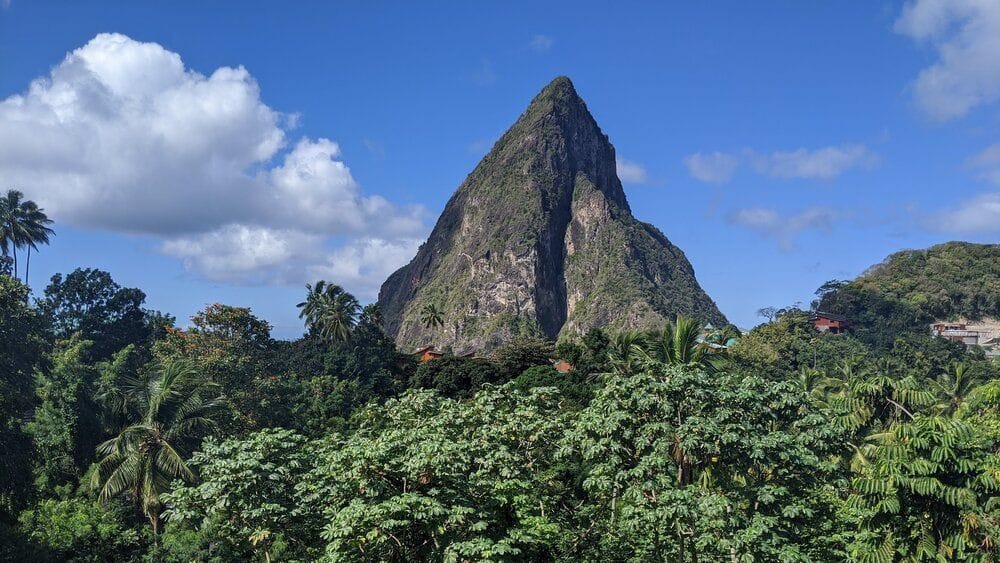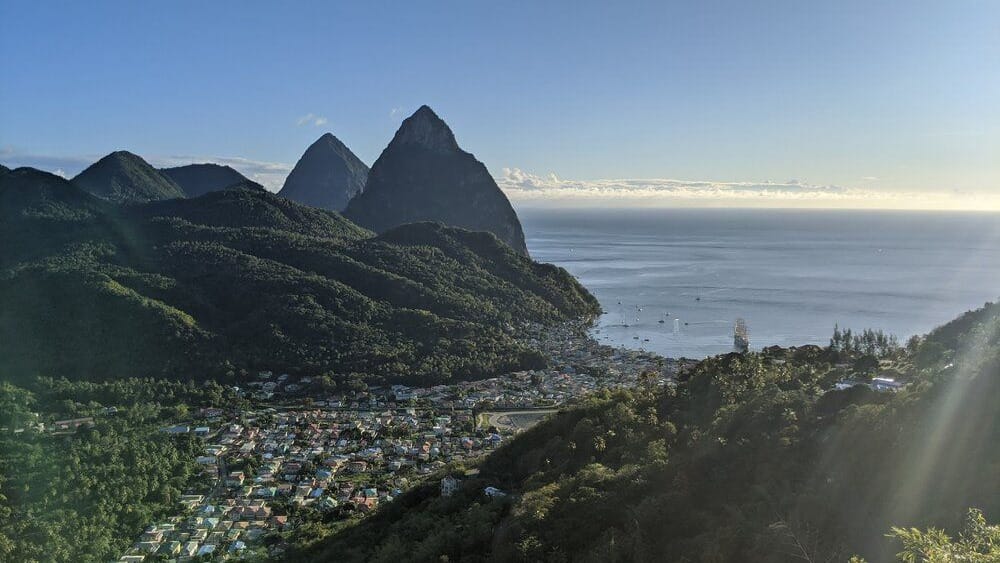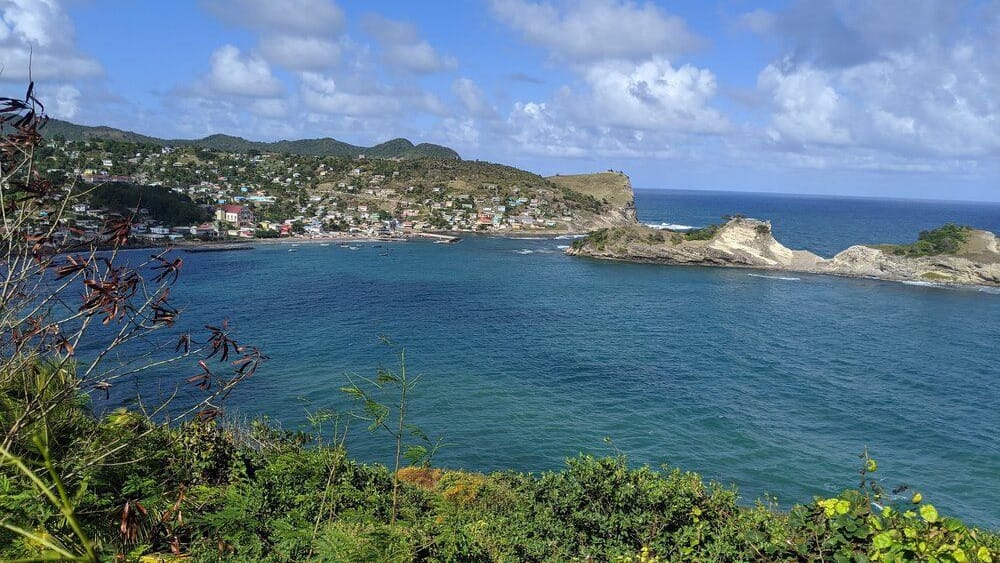Caribbean travel: St Lucia
St Lucia is one of the Caribbean’s smaller islands. But don’t let the size fool you; St Lucia is great place to travel, relax, and explore.

St Lucia is a Caribbean island best known as a wedding and honeymoon destination. It's easy to see why; the Caribbean weather coupled with the island's green landscape is a far cry from more developed urban environments.
However, that doesn't mean it isn't also a great place to visit even if you aren't planning to get married. Here's everything you need to know about the West Indian destination.
St Lucia's landscape

St Lucia is an independent island in the West Indies, located in the Caribbean Sea. Its most famous landmark is the twin mountains, the Pitons found at the southwestern tip of the country. These lend their likeness to postcards, artwork, and films, while even their name can be found on the locally-brewed beer, Piton.
If you have an image of St Lucia in your mind, this is most likely it. As the island is in the middle of the Caribbean Sea, it is subject to the area's climate, too. This means the majority of the time, warm sun shines down across the country, coupled with sudden torrential downpours. This blend of extremes gives rise to the island's lush greenery.
Vast natural landscapes surround the Pitons. Most of the island is not available to explore; the elevated centre is covered in farmland and nature reserves. Thanks to this unique geography, the main route around the island is a highway that largely circumnavigates the coastline.
In the main, the island is split between the tourist-centric west and the sparsely populated east. You might imagine that all Caribbean islands are roughly the same size, but that isn't the case. St Lucia is a small island. So small, in fact, that you could quickly complete a circuit of the island in less than a day via the highway.
So, although there is relatively little physical distance separating the two sides of the island, they are culturally and financially very different.
St Lucian culture
During the colonial era, St Lucia was a source of contention between the British and the French. The two countries tussled across many decades for control of the island, with power switching roughly once a generation.
While other colonial locations developed their own distinct aesthetic as native culture merged with 18th-century European sensibilities, St Lucia underwent many years of regime change and instability.
Because of this, the island lacks some of the distinct traits of the other Caribbean islands. Broadly, you'd know you were in the Caribbean, but there is little which uniquely defines St Lucia.
That's not to say that St Lucia is dull, though. Those who live on the island are passionate about it and warmly hospitable. On the whole, the island has been sheltered from the Western gentrification seen elsewhere. Green spaces have been preserved, and the country values the natural beauty of the volcanic island.
Tourism in St Lucia
However, without a unique selling point, it has been at the mercy of (mostly) US-based marketing, touting the island as a wedding or honeymoon destination. So, as you'd expect, tourism on the island almost exclusively caters to that market. Large resorts dominate the coastline on the northwestern edge. For instance, the Caribbean-based Sandals has three resorts within an hour's drive of one another.
There's another reason for this clustering, too; cruise ships. The main port at Castries (the St Lucian capital) is where you'll find the cruise ship dock. Ships vary in size, but a typical day could see thousands of people arrive for day trips.
Rodney Bay

Like many cities around the world, Castries is crowded, loud, and industrious. It is an ideal place to stay if you intend to do business on the island. However, all other travelers would do better to leave Castries and head to other areas. For this reason, the expensive area of Rodney Bay (located just 15 minutes from Castries) has become the default tourist hotspot.
Rodney Bay is not representative of the island, though. The area developed to cater to American travelers used to all-inclusive resorts. Outside of these resorts, there isn't much to see or do in Rodney Bay itself. There is a marina, two small shopping malls, and a handful of restaurants. It is a convenient hub, though, for access to other sights and activities St Lucia has to offer.
However, Rodney Bay is the chosen spot for many beach-goers. Although the island is lined with sun-baked coastlines, the Atlantic on the east is too rough to enjoy, while the south west is elevated, with most of the coast consisting of sharp cliffs. Gros Islet provides access to some of the island's most photogenic sandy beaches.
As amenities are never far away - most hotels and resorts are directly on the beach - this is the perfect area to relax to the sound of the waves from the Caribbean sea. If you are only visiting the area, or choose to book an in-land accommodation, select your beach with care, as some become very busy with cruise passengers.
Soufriere

The other notable tourist destination is Soufriere, a small town on the southwest coast. The main residential area sits on the coast with a small beach in the dip between two large hills and is home to the town's roughly 8,000 residents. The western side of Soufriere, on the incline of the hill, is where most of the hotels and restaurants can be found.
This includes the exclusive (read, expensive) Anse Chastanet resort, found down a fairly challenging dirt and stone road. While this type of accommodation isn't to everyone's tastes, it is still worth visiting due to the relative seclusion of the Anse Chastanet beach. Importantly, all beaches in St Lucia are open to the public.
However, hotels, resorts, and restaurants capitalize on the demand and will attempt to make you pay for access. There is no requirement to do this. That said, they can prevent you from using their facilities like toilets, sunloungers, and bars and restaurants.
Soufriere is worth visiting all the nearby nature reserves, walking trails, and local scenery. Its main attraction, though, is the often spectacular view of the Pitons. As the sun sets on this side of the island, it bathes the mountains in a pink, orange, and red glow.
As the town isn't far from Castries (nothing is really that far apart on the island), it's the island's primary activity hotspot. The resorts in this area are unlike those in the north; they have large estates that are free to roam and explore. You can spend hours walking through forests and plantations, with quiet privacy.
That's not to forget the opportunity to climb the Pitons. By all accounts, these are more akin to climbing than hiking or walking, but the accomplishment and view over the sea are likely worth the effort. If you'd rather take a shorter, more comfortable walk for a view of the Pitons, there is the Tet Paul Nature Trail instead.
St Lucia is a volcanic island. The lava from ancient explosions eventually formed the Pitons. Although largely inactive now, there are places where you can still peer into the volcano. Referred to as the Soufriere Drive-In Volcano, the opening emits the recognisable smell of sulphur for miles around. Although you can't actually drive into the volcano, it is possible to drive up to it.
When you exit your car, there's a short guided tour you can take, with your guide giving you a brief overview of the site. The volcanic activity here creates black sulphuric water. As streams form, it mixes with the rock and mud. This combination is generally thought to be good for the skin, and so the Sulphur Springs mud bath is worth a visit, too.
The East

St Lucia is roughly split between the tourist-focused west and the sparsely inhabited east. Despite the small geographic distance between the two areas, the east is notably quieter and less prosperous. Most work is centred around the Gros Islet area, which includes Rodney Bay and Castries on the west of the island.
The circular highway makes it easy and quick to drive over to the east of the island. If you take the northern route, it is generally more crowded on the roads as traffic makes its way to and from Gros Islet. The southern ring is longer, but quieter, with larger roads and fewer inclines.
However, there is little to visit on the east of the island. There are two notable towns; Micoud and Dennery. Neither is specially catered for tourism as there are few places to stay, no resorts, and only a handful of local restaurants.
That's not to say it isn't worth taking the trip, though. In quieter stretches of land, self-catered accommodation has started to appear, with options listed on significant booking websites. These are ideal for those looking for some quiet time away.
The eastern coast faces the Atlantic, however, so although everything is based on the coast, the roughness of the sea means you should appreciate the view, rather than dive in.
As you travel towards the northeastern part of St Lucia, the coast becomes tropical and accessible. Nature reserves, gardens, and forests line the shore. Because so few tourists take the time to visit, these sites are generally very quiet. So much so that you'll likely spend the whole time without passing another person.
Tourist outings are often fast-paced activities. Whether that's adventure trips like quad biking or just because of the available time, you don't often get the chance to really explore and get to know an area. St Lucia is the perfect slow-travel destination.
There's not a huge list of activities to tick off, so you get to be present and experience the island. Given that much of the focus is on being outdoors in natural environments, this creates an enjoyable counterpoint to our often hectic urban lifestyles.
St Lucian economy
St Lucia's economy is primarily driven by tourism. The majority of people are employed in the industry, and most development is done to cater to tourists. That's true of the hotel resorts, the areas around Gros Islet, and the emerging self-catered accommodation in the east.
There is some small-scale farming and agriculture, but not at a scale or variety to serve the needs of the country. Additionally, there is little in the way of manufacturing or services industries. As a result, most goods and services need to be imported to St Lucia.
The Hewanorra International Airport is located on the south of the island by the town of Vieux Fort. This is where the majority of planes arrive and depart, especially for international travel. There is a smaller runaway located near Castries - George FL Charles Airport - mostly used for domestic or inter-Caribbean flights.
The port in Castries is the primary location for goods arriving in the country. However, it is limited by its size, so larger ships cannot dock here. As a result, importing goods is a slower affair than elsewhere.
The focus on tourism and reliance on external sources for food, goods, and services means that the cost of living is high in St Lucia. As is the case around the world, the high prices paid by tourists do not make their way proportionately to local workers. Instead, the (usually foreign) resort owners pocket the excess, paying their workers just enough to get by.
This is made doubly challenging by the high food prices in local supermarkets. There are only a few chain grocery stores around the island, with most residents buying what they can locally from nearby producers. Still, the high prices make living in St Lucia economically tricky.
The reliance on tourism also means there isn't much professional diversity. For more opportunities, many young St Lucians travel abroad for work. The same is true of education, with the closest university found in neighbouring Barbados.
While there are economic hardships for many St Lucians, that doesn't dampen their spirits. Almost universally, every St Lucian you encounter is empathetic, warm, and happy to help.
They are proud of their country but are also realistic about prospects there. For that reason, many encourage their children to study and work abroad, even though that means they'll likely not see them again for many years.
Visiting St Lucia
Despite all the concessions made for tourists, you won't find global brands littering the island. If you travel to St Lucia and opt to explore the island away from the all-inclusives, you'll find a natural, spectacular haven to enjoy in relative peace.
Hiring a car and spending many days casually delving into the landscape at a relaxed pace is the best way to spend your time in the Caribbean generally, but is especially the key to unlocking the best St Lucia has to offer.

